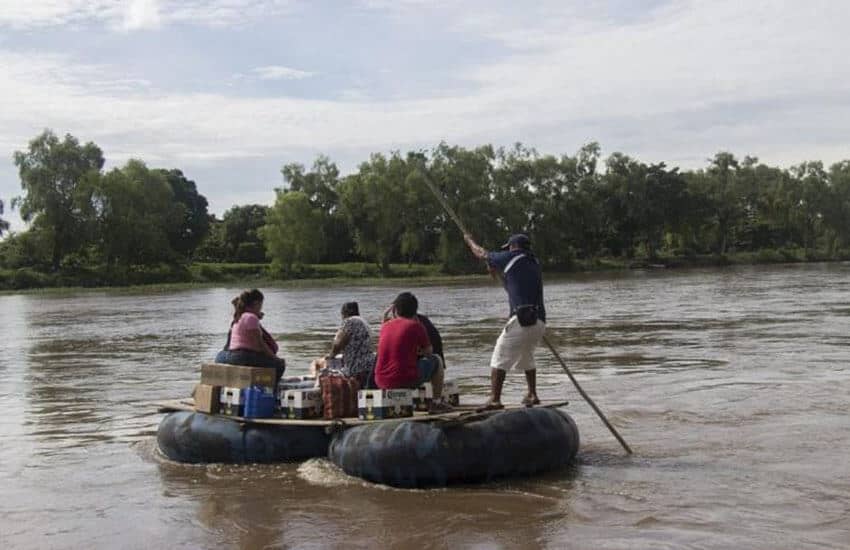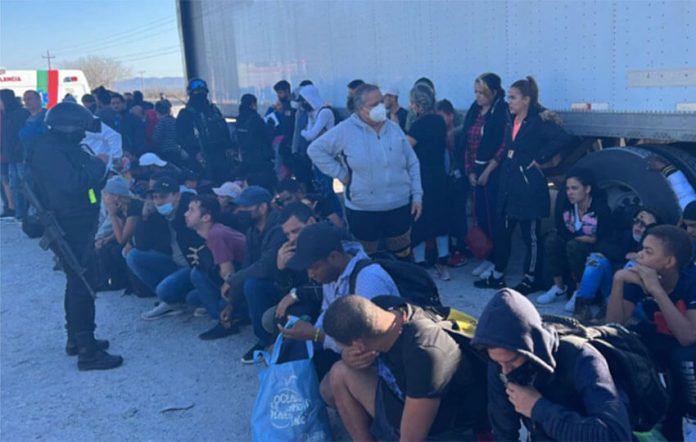More than 120,000 migrants have been detained by immigration agents this year, the National Immigration Institute (INM) said in statements this month.
The figures for the state where most migrants are halted — Chiapas — show that there has been an increase in detentions there compared to the monthly average in 2021, but it is unclear whether arrivals of undocumented migrants in Mexico has increased.
More than 4,000 migrants crossed the southern border every day in 2021 on average, a 44.5% increase over 2020, the INM said in December.
The INM said in a statement on April 15 that 109,186 of the 115,379 migrants detained until April 13 were from Central America, South America and the Caribbean, while 6,188 were from Asia, Europe, Africa and Oceania, leaving the origins of five migrants undeclared.
The institute added that some 22% of the migrants were detained in Chiapas, while 11% were halted in Mexico City, followed by Baja California, Tabasco and Veracruz. 97,730 were adults and 17,649 were children, 3,544 of whom were traveling alone.

Central Americans made up just over half the total number of migrants detained this year until April 13. Hondurans and Guatemalans each made up 19% of that group, while 7% were from Nicaragua and 6% were from El Salvador.
Aside from Central America, 14% of the migrants were from Cuba. The INM didn’t confirm how many of the detained migrants were from Haiti, despite people from the Caribbean nation being one of the main groups that has entered Mexico without papers in recent years.
Asian and European nationals both accounted for more than 2,000 undocumented migrants, while 1,282 migrants were from Africa and 12 were from Oceania, the INM confirmed, without specifying their nationalities.
“The INM reaffirms its commitment to safe, orderly and regular migration with full respect and safeguarding of the rights of those in transit through Mexico,” the INM said.
A second INM statement, released on April 25, said agents had detained 5,688 migrants in the previous four days.
It confirmed there were 200 unaccompanied children and also offered more information on the migrants’ countries of origin. It said the migrants were from 42 different countries, largely from Central America and Cuba, but also Colombia, Venezuela, Peru, Ecuador and Haiti.

However, the institute exposed the complexity of the migratory phenomenon by revealing the Asian, European and African migrants’ countries of origin. Among those nations were France, Nigeria, Kazakhstan, Yemen, Romania, China, Ivory Coast and Egypt.
The INM said that many of the migrants detained since April 21 had been found in safe houses, trailer containers or trailers for cattle sometimes in “an overcrowded condition, without ventilation, water and food.”
It added that other migrants were found on foot in the desert, in mountains or on highways “after being assaulted, injured or abandoned by supposed guides” or traffickers.
The INM normally takes migrants to detention centers manned by armed police and observed by police in watchtowers to prevent their escape. The INM terms the detainment of migrants as “rescue,” which means no judicial process is required for their detention.
Such detentions increased nearly threefold in Chiapas in annual terms last year: in 2020 there were 25,000 detentions, compared to 67,376 in 2021.
Passing through Mexico legally is barely viable: the refugee agency COMAR, Mexico’s government refugee agency, has been unable to process a flood of asylum applications, leaving migrants stranded without the right to work or travel. Some have waited more than a year for their applications to be resolved.
Some decide to break the law and travel north in migrant caravans and many receive humanitarian visas some way into their journey. Others, barred from legal transportation such as coaches, pay traffickers to take them through Mexico. The journey can be dangerous: at least 55 migrants died and over 100 more were injured in a horrific truck crash in Chiapas in December.
Many other migrants who cross into Mexico are never caught: over 4,000 migrants crossed the southern border every day in 2021 on average, a 44.5% increase over 2020, the INM said in December.
Mexico’s tough migration policy has largely been the result of pressure from U.S. authorities: former United States president Donald Trump said on Saturday that Mexico “folded” and agreed to place troops on its northern border to stem immigration to the U.S. when he threatened in 2019 to impose blanket tariffs on Mexican imports.
U.S. President Joe Biden has so far found no solution. Record numbers of migrants attempted to cross the U.S.-Mexico land border in his first year in office.
Mexico News Daily
